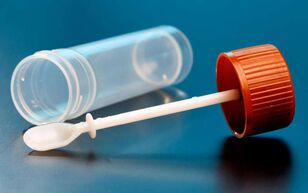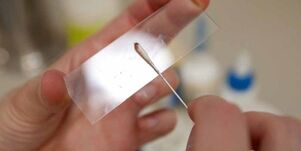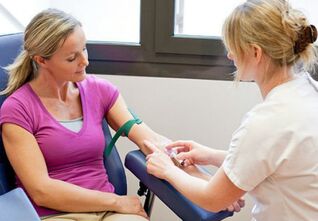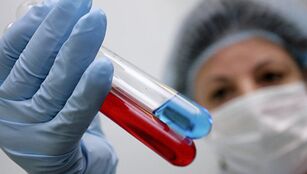What tests should be done to identify worms?
Worm testing should be done regularly to identify disease early. The most famous of these is stool analysis, which is done before getting a job or a trip to a sanatorium, but this is not the only or most reliable way to identify parasites. The most accurate answer will be given by a combination of tests.
What Worm Tests Are There?
The list of tests to be performed to identify parasites is quite long.
The main ones are:
- Stool testing, also known as worm eggs, is the most common method. Advantages: massive use, without the need for complex equipment. Minus - lack of precision;
- ELISA, also known as a blood test for worms. Advantages: high precision. Cons: it reveals only certain stages of the development of the parasite, at other times the result will be questionable;
- Analysis of other biological media (urine, sputum, duodenal content, epidermis). Advantages: allows you to identify parasites in those locations that are not available for other analyzes. Cons: associated with significant inconvenience to the patient.
Typically, a patient is prescribed a combination of several tests to identify the parasite. The recovery criterion is a negative ELISA result and several negative results from the study of the biological environment where the worms are detected.
Stool Analysis for Worm Eggs
Most worms live in the intestines, so the most common test for worms is the stool test. It is prescribed for routine medical examinations for adults and children, before being sent to a sanatorium or children's camp, as part of a health book, during hospitalization. In addition, this analysis is carried out by people who have been in contact with infected patients, who have eaten untested food, who have noticed symptoms characteristic of worms.

It is not necessary to prepare especially for the analysis, you can collect the stool at any time of the day, but the most indicative is the morning stool. Immediately before delivery, the perineum should be washed to avoid impurities in the urine and discharge from the genitals.
The feces for worm testing are collected in a special container. It is sealed and a special scoop is attached to collect the material. To collect the most informative part of the material, you should take a sample from the middle of a portion of stool. The container should be about a third full. You must deliver it to the laboratory the same day.
In the laboratory, a specialist examines feces under a microscope and identifies the worm eggs they contain. Most of them have a characteristic shape that allows you to accurately determine the type of worm. Based on the results of the analysis, a conclusion is made about the absence of eggs or about their presence and type, after which treatment is prescribed.
This is the most common but least accurate worm test. The reason is that there may be no eggs in the portion that has entered the container, even though there are worms. Therefore, if the patient complains of characteristic symptoms or has been in contact with the source of infection, it is required to undergo 5-6 tests with an interval of 2-3 days. In this case, the probability of detecting parasites increases significantly. Along with the study of stool, other diagnostic procedures are prescribed.
Skin scraping

This test generally complements the stool test. The most accurate result is achieved by diagnosing pinworms that lay eggs on the surface of the skin near the anus. Indications for such an analysis are routine examination of children and adults, registration of a child in a kindergarten, school, camp or sanatorium, hospitalization of children and adults, suspected pinworm infection (itching in the anus, disordersdigestive systems, contact with sick people). Most of the time, children suffer from this disease, which explains the name of the worm (children's pinworms).
It is not necessary to prepare for the analysis of worms, you should not wash the perineum, so it is possible to wash the eggs of parasites, you should refrain from bathing or showering the night before. The analysis is done in the morning. A special film is used to collect material from the skin of the gluteal fold. The study is also carried out under a microscope. It does not detect other helminthiases, except pinworms.
Urinalysis
This test is the least commonly prescribed, as parasites almost never live in urine. Situations are possible when pinworms are found in urinalysis, but this indicates a violation of the rules for passing the analysis - parasites and their eggs enter the container from the skin of the perineum. Most often, this situation occurs in girls, less often in boys.
But there are still prompts to test. Some tropical parasites live in the kidneys and urinary organs, for which a person is "rewarded" with a trip to resorts in Asia and Africa. With the increasing availability of exotic recreational areas, the spread of parasites uncharacteristic of our country is also growing. For this reason, it is advisable to have a blood and urine test for worms after a trip to the resorts.
Types of worms found in urine:
- Trichomonas;
- Distomum haematobium;
- Filaria sanguinis hominis;
- Taqnia echinococcus.
Also in the urine there may be eggs of liver parasites: echinococci and trematodes.
Sputum analysis
There are various parasites that spend all or part of their life in the lungs. The symptomatology of its appearance is not characteristic: catarrhal phenomena develop in the bronchi (inflammation, cough, wheezing). Hemoptysis, pneumonia of unknown origin, and other pulmonary phenomena can be seen.
Parasites detected by the sputum worm test:
- Ascaris - in the larval stage they need oxygen;
- Echinococci and alveococci are tissue parasites that live in parenchymal organs, including the lungs;
- Dwarf Fluke: lives mainly in the lungs;
- Strongyloidosis, not catorosis - parasitosis characterized by the intestinal location, the location in the lungs is found to be atypical.
To collect sputum no special preparation is required, but it is advisable to brush your teeth and take the material in the morning. Before that, it is useful to drink a lot of fluids, this improves the expectoration of sputum. The collection container should be clean, but not necessarily sterile; bacteria do not influence the diagnosis. In this case, both the parasites and their eggs are detected. If the patient cannot cough up the phlegm, it is removed from the trachea with a vacuum suction.
It is possible to use drugs that improve sputum discharge, stimulate its formation to obtain more accurate results of the analysis of worms. In combination with a blood test for worms, it gives very accurate results. Unlike stool tests, eggs are more likely to be found.
Blood test

ELISA, or blood test for worms, the most accurate method for its determination. Helminths cause a powerful reaction of the immune system: the content of eosinophilic leukocytes increases, the production of immunoglobulins increases, and specific antibodies against parasites appear. It is in its detection that the ELISA method is built.
Antibodies against parasites are extremely specific: they can be unambiguously diagnosed, while they are present in the blood only in the presence of parasites and within 3 weeks of their disappearance.
Blood from a vein is required for analysis. No special training is required. The result can be obtained in two days. The precision is close to 100%, the specificity of the antibodies does not allow an erroneous result. The recovery criterion is a negative result one month after treatment.
Analysis of duodenal content
The ducts of the bile ducts and the pancreas empty into the duodenum. These organs are often affected by echinococcosis and opisthorchiasis. The parasites lay eggs, which pass through the ducts into the intestines. The technique of analyzing the contents of the duodenum for worms allows detecting these diseases with much more precision than analyzing feces.
The material is taken with a duodenal tube on an empty stomach. If the patient has a pronounced gag reflex, pain relief is applied. The procedure is quite unpleasant, therefore it is resorted to only in those cases when the results of other examinations are doubtful.
When should you test for worms?
Worm testing should be done in the following situations:
- The patient is experiencing symptoms of helminth infestation;
- The patient has been in contact with sources of infestation (sick people, untested products, areas with an unfavorable sanitary environment);
- Confirmation that the patient is not a source of infection (employment, health records, out of town break, hospitalization) is required.
How to get tested for worms

To get tested for worms, you need a referral from your GP. Most examinations do not require preparation, and if there are nuances, the doctor will explain them to you when prescribing a study. Directions are required for the doctor to write a referral.
In commercial clinics, you can test regardless of indication. The price varies considerably. The time to obtain the results of the stool and the scrapings is approximately one week, the analysis of urine, sputum and blood is approximately 2 days, depending on the workload of the laboratory.
What types of helminths can be detected by testing?
Worm testing detects most types of parasites: intestinal and extra-intestinal forms. The most accurate is a blood test for worms, which allows you to identify the parasite.


















































